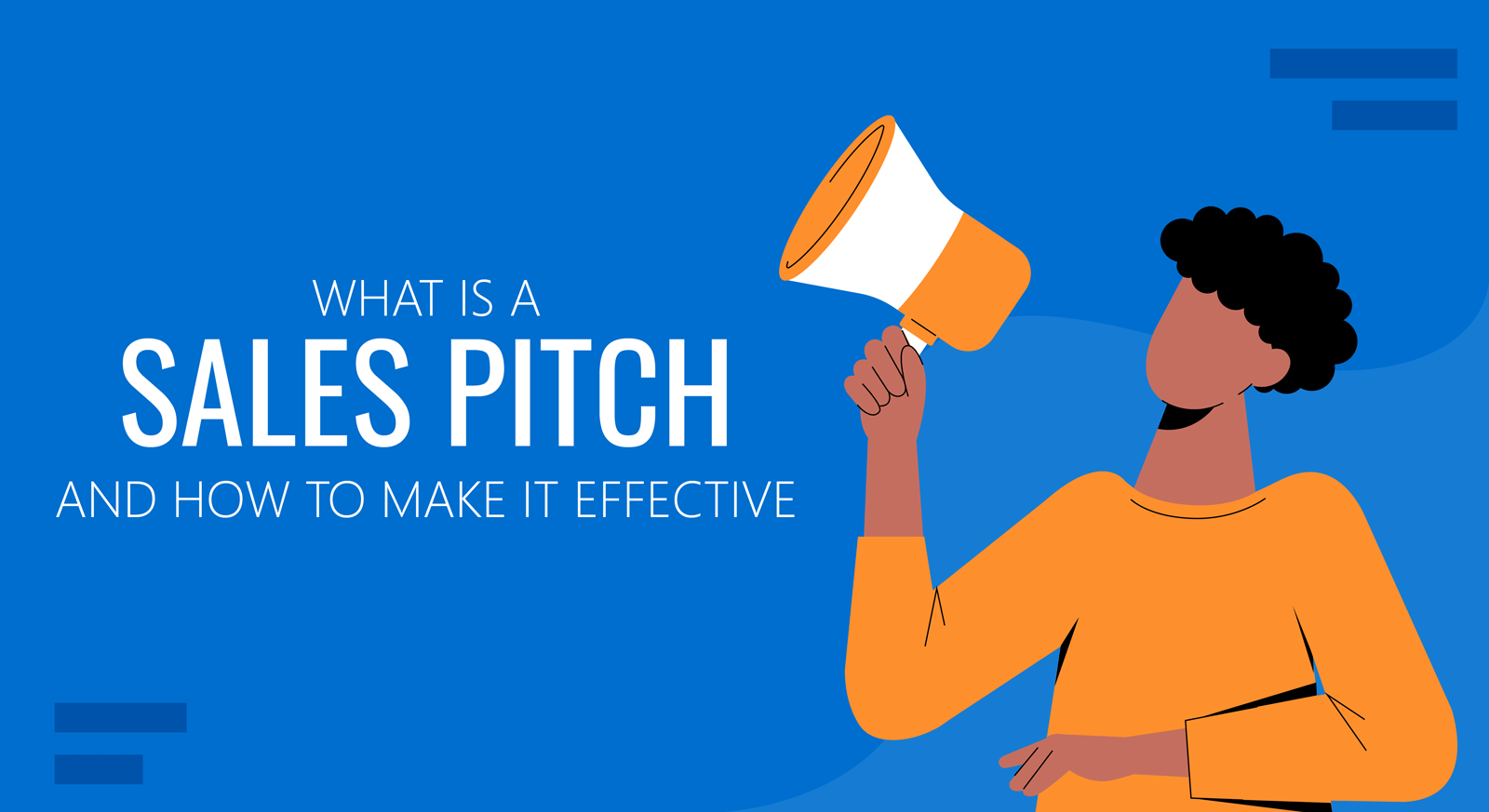
An effective sales pitch is the key to sustainable businesses. A sales pitch can make or break the deal. Most people consider a sales pitch as a representative of facts and figures to make an argument based on data alone. However, a sales pitch is more than that. It’s about crafting a compelling narrative for a prospect to persuade him to buy a product/service.
Table of Content
- What is a Sales Pitch?
- How to Start a Sales Pitch? Start Strong, Close Well
- How to use a Sales Pitch
- Different Types of Sales Pitch
- Essential Tips: How to Create a Sales Pitch & Ensure It’s Effective
- Sales Pitch Examples
- Ideas: What to Include in a Sales Pitch Presentation?
- Advantages of Perfect Sales Pitch
- Why A Short Sales Pitch is A Good Pitch
- Final Words
What is a Sales Pitch?
By Definition: A sales pitch is a minutes-long script or a concise statement where a salesperson persuades a prospect whether or not to buy a product/service.
In this article, when we refer to a salesperson, we are referring to the role, and not a specific person. Every person in an organization can take the salesperson role when interacting with prospects.
A sales pitch is a minutes-long script or a concise statement where a salesperson persuades a prospect whether or not to buy a product/service.
A sales pitch enables a salesperson to give a precise idea about how a product/service will help solve target audiences’ challenges.
People pitch for sales differently. They treat their sales pitches as a presentation of facts, figures, and results, expecting to make a compelling argument based on data alone. Alternatively, they can use creative and modern ways of pitching sales to make the whole process more engaging.
This article will explain what a sales pitch is?, and how can salespersons make a successful sales pitch.
How to Start a Sales Pitch? Start Strong, Close Well
No one wants to be sold to, which makes a sales pitch difficult. When starting a pitch, a salesperson has to hook the prospect before he can actually sell the product/service.
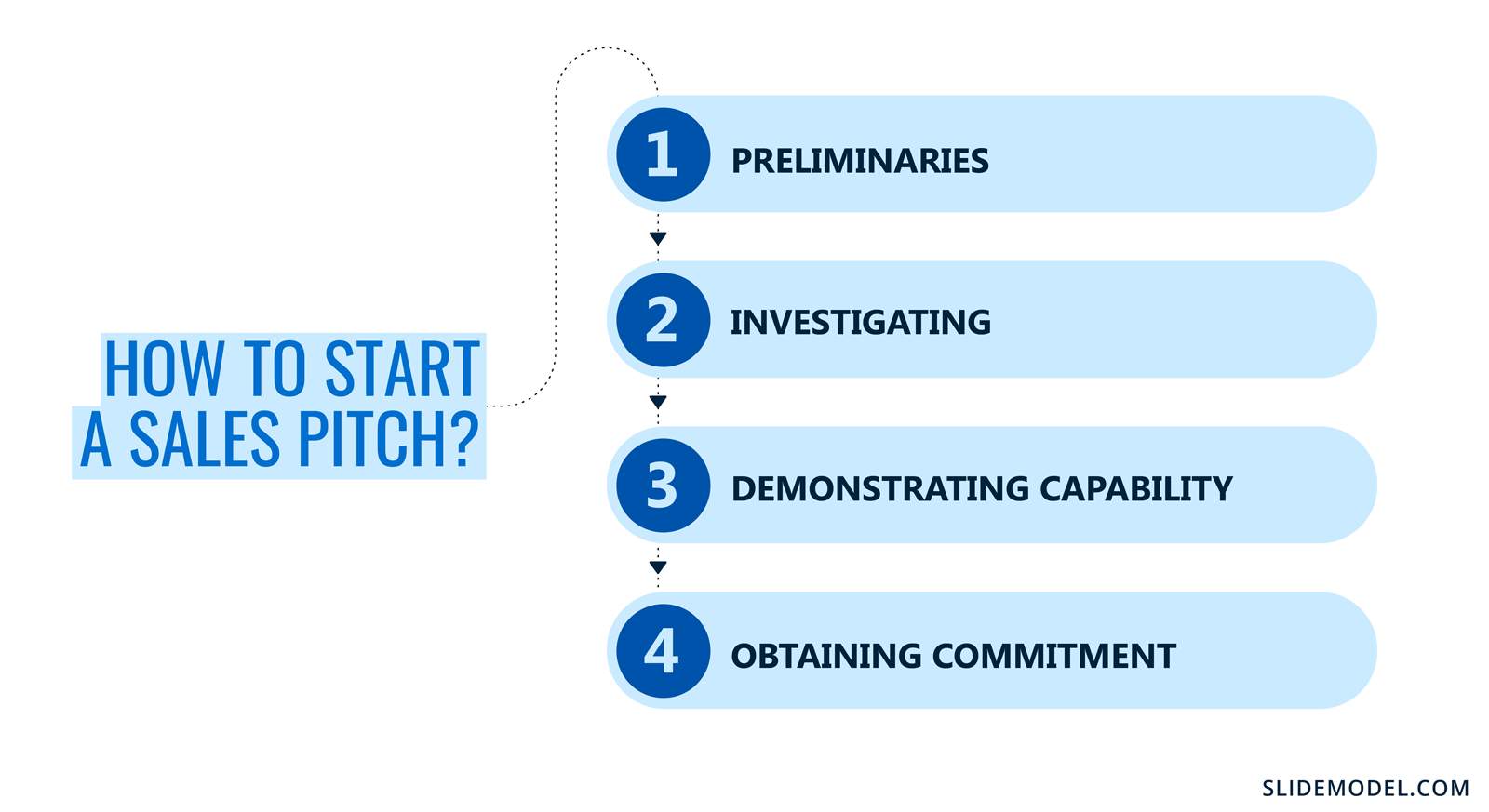
If you’re wondering how to write a sales pitch that works, according to the book SPIN Selling by Neil Rackham, a successful sales pitch consists of four stages. Follow these four stages to a sales pitch for better prospecting.
Preliminaries stage
The first 2 minutes of the sales pitch are crucial. During the preliminary stage, a salesperson introduces himself. It’s important to make a great first impression to help significantly impact the whole sales process and the sales development. Your initial message should enable the prospect to gain confidence. Show your interest in their challenges.
Investigating stage
During the investigation stage, sales reps can ask questions from prospects to know their core needs and wants. It helps to improve the overall sales by 20%.
1. Situation Questions. Ask data-gathering questions about facts and background to learn about your prospect Ask about the organization and the “person” in the organization. You should navigate from business goals to personal goals inside the organization. The questions will be guided by your product/service scope. For example, if the service scope is management consulting, questions will look like “Which are your current Corporate Planning Processes?”, “Your organization has in place actionable governance practices?”. Remember to target the person, “What is your responsibility in the Corporate Planning Process?”
2. Problem Questions. You may ask, “Is it difficult to use a digital printer?” or “Are you satisfied with the company’s revenue growth during the past 6 months?” All of these are problem questions.
3. Implication Questions. Implication questions dig deeper into the consequences of the problems, thus paying attention to the problem’s seriousness.
Ask, “Does it impact your productivity? Or “How does this problem affect your company’s future?”
4. Need-payoff Questions. Finally, these questions will hook your customers to a point where you will be able to tell the benefits of your offer.
Questions like, “Would you be happier with the productivity if you could speed up the printer’s performance by 10%? or “If we could help you with lead generation, how would it impact the revenue generation of your company?”
Demonstrating capability
Once you understand the customer’s problems, demonstrate your capability to present a solution. It includes a formal sales presentation or sometimes a product demo.
Sell them on benefits, not features. This is called a value statement. Give your audience a clear picture of how your product’s unique features solve the challenges they face.
Obtaining commitment
The end of a sales pitch includes convincing the client to try out your product, attending a demo session or getting on a call. Hook your prospect emotionally to get some sort of commitment.
According to the Psychology of Selling by Brian Tracy, buying decisions are 100% emotional. Understanding the customer needs, challenges, goals, and pain points helps sales reps find a hook to grab the audience’s attention easily.
How to use a Sales Pitch
Use sales pitch for solution selling
According to the book The Challenger Sale, the term “solution selling” is dominating sales and marketing strategies today. It allows sales reps to bring smart solutions to the customers. Sales reps who master the art of solution selling and understand customers’ problems, bring great results.

Since solution selling requires sales reps to understand the customer pain points step by step, the sales processes are longer than before. The process requires more effort to drive commercial results and understand the evolution of the sales model itself.
A sales pitch should lead to more conversations
Salespersons do not have to get too formal when presenting a sales pitch. Lead the conversation in a friendly and approachable way. That’s how salespeople can take the prospect to the next stage in the sales funnel seamlessly.
A great sales pitch is often geared toward providing solutions. It should not sound too salesy. Solution selling allows a sales representative to present a solution to a certain problem rather than supplying a reliable product.
Use the sales pitch as an informative and educational tool to book the next appointment
The goal of a sales pitch should not be to sell a product but to book the next appointment. It should be informative and educational enough to engage the prospect creatively. It must provide value, and educate the prospect about benefits rather than explaining a set of features.
It should bring the target audience tangible reasons for achieving goals like:
- Improved return on investment (ROI)
- Reduced operation costs
- Percentage of savings year-over-year
For a successful sales pitch, show empathy
Sales reps need to show empathy with the prospect to have a successful sales pitch. When salespersons do so, it puts them on ‘their side.’ Being empathetic toward prospects positions a sales rep as a solution, and it improves the chances of a successful pitch.
Make the customer a hero
The element of solution selling coupled with storytelling leads the sales pitch. Include storytelling in a sales pitch, and make the customer a hero. Selling is easier if the customer is the hero.
A sales pitch is about prospects rather than yourself
A sales pitch is not about a salesperson, rather it must be about the target audience. Prospects never care about how smart a salesperson is and how incredible results a sales generation company brings in. But they are interested in knowing what it is in for them.
A salesperson has to research to understand and analyze prospects, and their preferences by listing down their likes, dislikes, and interests.
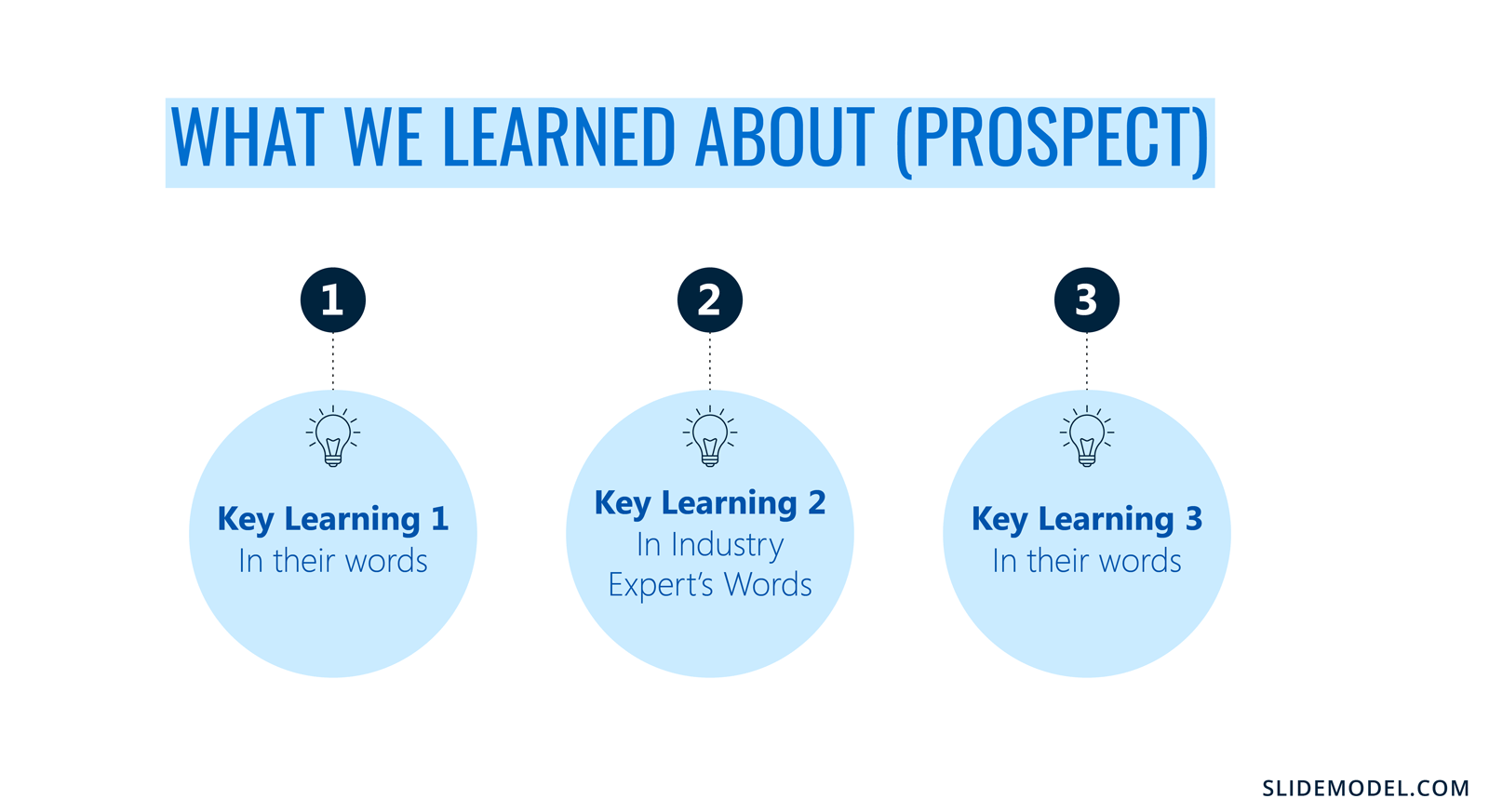
Leverage storytelling in the sales pitch
Storytelling is a key aspect of a sales pitch. Today, most salespeople lack passion, and they sound disinterested in what they are offering. As a result, they sound too promotional.
Salespeople don’t need a one-size-fits-all sales story but a great sales story crafted around the preferences, goals, and desires of the prospects.
Use it as a great tool to excite the audience
A great compelling story should include the following parts to get the prospect excited with the sales pitch. It should;
- Address clients’ major issues
- Differentiate itself from competitors
- Address customer pains
- Results that would help them achieve
Different Types of Sales Pitch
Product sales pitch
A product sales pitch is specifically about a product rather than a service. The pitch should be tailored to the problems a product is going to solve.
Sales reps need to adopt a personalized approach for a successful product marketing pitch. As a salesperson starts a product pitch, he should focus on the change the product is going to bring about. Only then, they potentially encourage the target audience to take action.
Below is a great demonstration of Zoho, a fully featured CRM and full of content. The sales pitch focuses on benefits like multichannel, great sales performance, automation of the business processes, improving sales productivity, and extended and customized services.
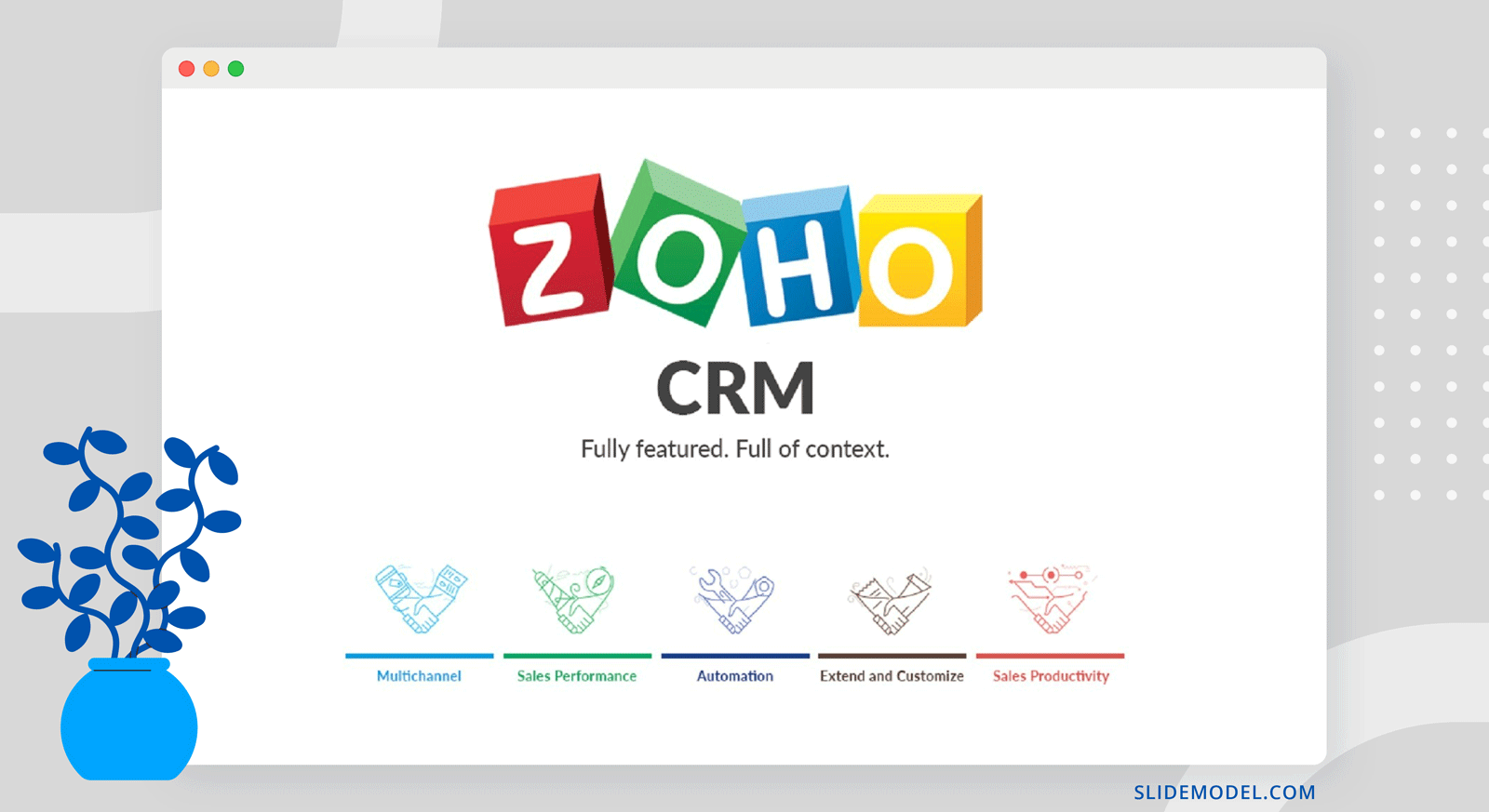
Service sales pitch
Like a product sales pitch, a service sales pitch should be short, concise, and effective. It should deliver the value without actually going into the fluff.
For example, ReCheckDocs is a startup that provides organizations with ultimate data protection, tracing, and verification. It leverages decentralized technologies for safety and data protection easily and efficiently.
The pitch is very simple, i.e. “Documents protection can be hassle-free.”
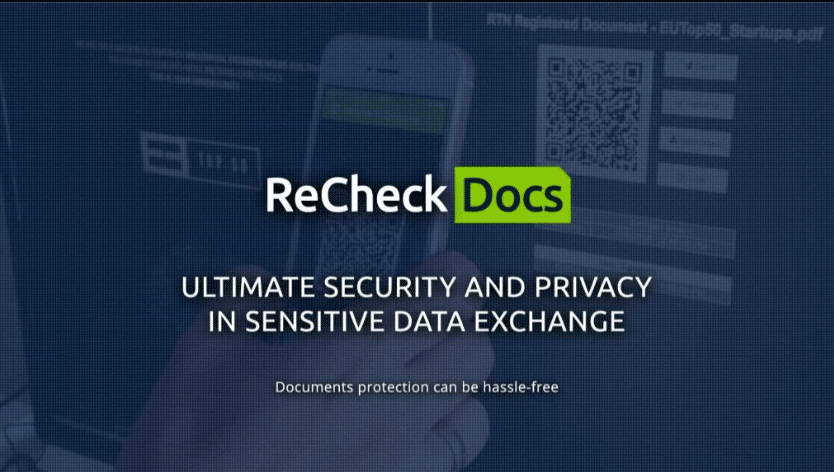
Consultative sales pitch
A consultative sales pitch is unique in a way that it includes the process in which salespersons are trying to sell to a prospect who is already using a competitor’s product/service.
It’s hard to convince a customer to buy a product when he is already using a competitor’s product. That’s where the traditional product-centric sales pitch fails.
The following are the key skills that sales executives need to have for a successful consultative sales pitch.
- Have a clear communication
- Be a business peer and win customer’s confidence
- The more time a salesperson will spend knowing the prospect, the better they sell
- Act smart, and clearly showcase why the prospect should use the product over competitors
- Show a genuine desire to understand, show empathy, and genuine curiosity to help the target audience.
- Remember, the consultative sales pitch is somehow hard because the prospect is already using some kind of product.
Below is a great sales pitch narrated by David Brock, he explains how his wife’s friend ended up selling his product to her.
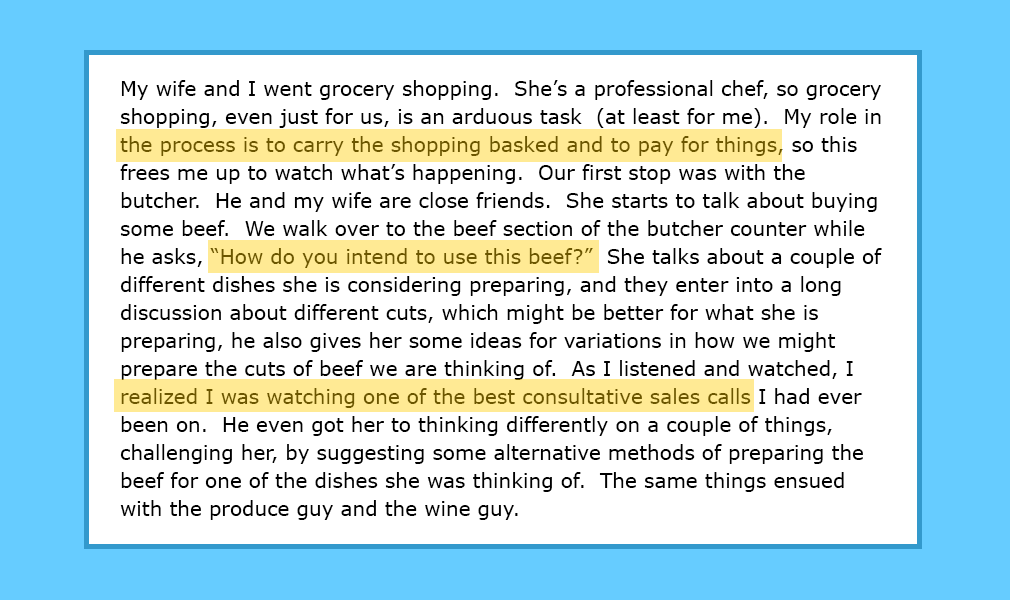
Essential Tips: How to Create a Sales Pitch & Ensure It’s Effective
When creating a sales pitch, avoid using jargon. Make it short and use simple language. This makes a sales pitch clear, and a clear sales pitch is often considered the best sales pitch and always wins.
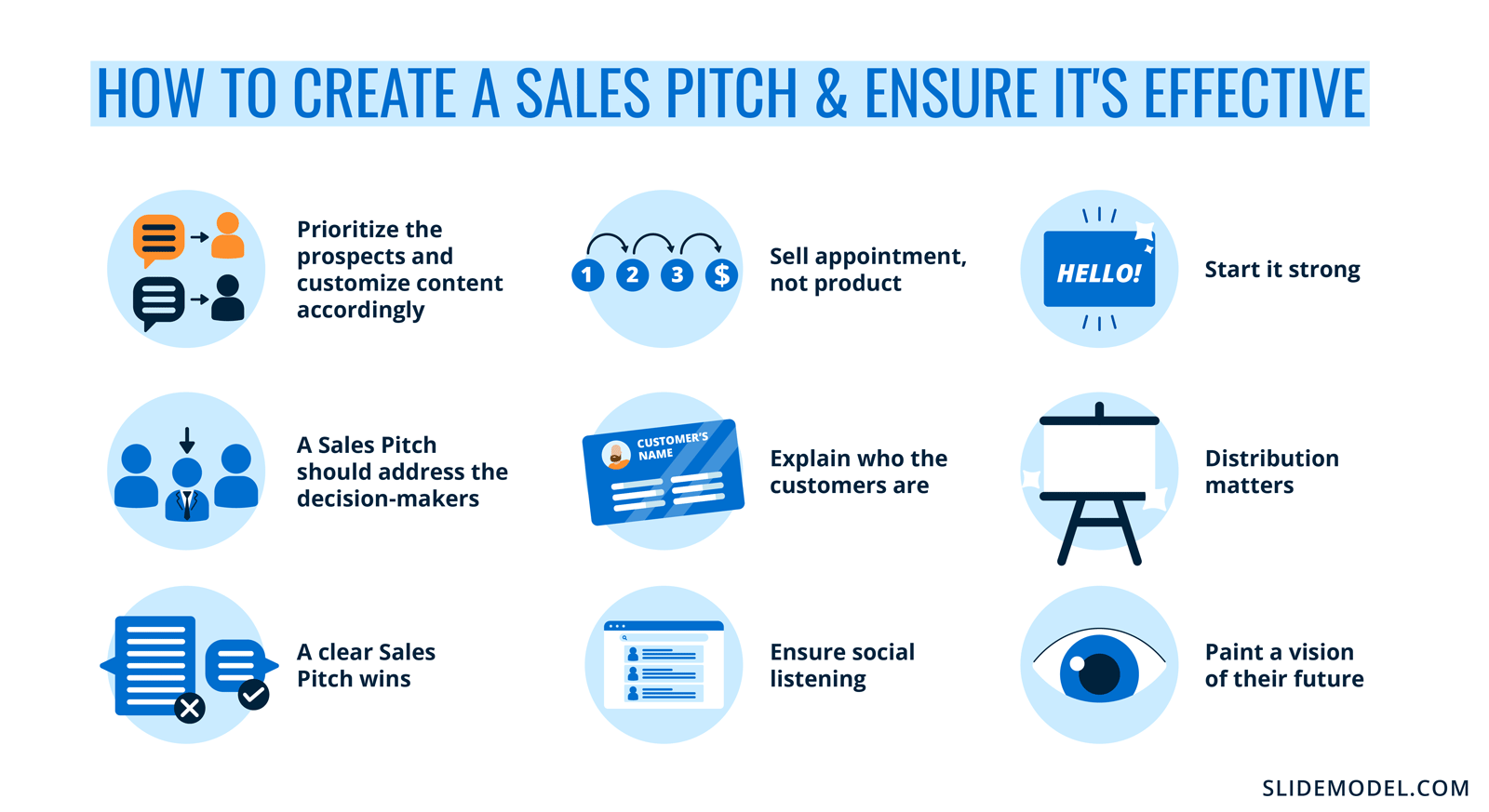
1. Prioritize the prospects and customize content accordingly
For a small sales call, salespersons might have to create concise content. However, for the large sales pitches, they need to do an in-depth study because the prospect is really concerned about the value.
The most important rule for selling success is to spend more time with better prospects. Identify the basic and secondary needs understand their buying behavior and create content accordingly.
If you want to deliver an outstanding sales pitch, you can also use an interactive presentation maker to keep your target audience engaged.
2. A sales pitch should address the decision-makers
Building a relationship is the key, but no one would prefer a great relationship over value. Choosing the right target enables sales reps to execute repetitive behavior, and do the math. That’s why salespeople who figure out this win the process, repeat it, and never step back from the daily grid.
According to The Challenger Sale, selecting target accounts is a rare opportunity to be strategic. Sadly, senior sales executives take for granted that their employees are working with the right target audience.
3. A clear sales pitch wins
When creating a sales pitch, avoid using jargon. Make it short and use simple language. This makes a sales pitch clear, and a clear sales pitch always wins.
A sales pitch should not miss out on any important aspect. It should include and explain the following points:
- Specialize. Tell the audience what is the specific skill that will help them find a solution.
- Differentiate. Explicitly explain why they should choose the product/service over the market competitors.
4. Sell appointment, not product
According to the sales book New Sales. Simplified, sales reps need to focus on selling the next appointment, not the product/service. It is one of the important rules when pitching on the phone.
New hires on the team often start telling the feature in their eagerness to move to the next stage of the sales process. It kills the sales entirely. At this stage, the prospect does not even have enough information to consider the offer seriously. As a result, he will answer he’s not interested or doesn’t have enough needs now, and the sales process will lead to a dead end.
5. Explain who the customers are
Many sales organizations assign new hires to identify and choose potential clients which is a daunting task. A new hire doesn’t have an in-depth understanding of who the potential customer is.
Having an in-depth understanding of the audience by the sales team improves the sales by almost 100%. To get an idea of the target customer, sales reps should take the time to understand:
- Identify the best customer using various parameters, including location, business model, industry, business size, etc
- Why did they make the first purchase, and are they still willing to buy
- Who are the market competitors, both major and minor
- How would position the product/service so that the prospects choose the product/service over the competitor?
- Who chooses not to do business at the end of the sales funnel?
6. Ensure social listening
It includes reaching out to potential prospects and knowing their preferences and buying behaviors. It’s great to pursue contacts higher up in the organizations to target.
For example, LinkedIn is one of the sought-after platforms for salespeople. Leverage sales navigator to find potential prospects and connect with them. Use various filters and explore the myriad of options to conduct the research and initiate relationships.
7. Start it strong
Well, begun is half-done. If sales reps start with a strong opening it breaks the preoccupation of the prospect and grabs attention, making him fully alter to listen to a sales pitch.
Recommended reading: How to Start a Presentation: Strong Opening Slides & Tricks To Test
According to the Psychology of Selling, sales executives will enjoy the sales process if they learn this principle. To do so, talk about how the product is going to help them save time, money, and energy.
8. Distribution matters
Distribution and presentation are everything when it comes to a successful sales pitch. Sales reps should be able to pitch it to the right audience at the right time using the right tools which might include a free trial of the product, a presentation, a demo, etc.
Use a pitch deck presentation where necessary. Almost 80% of the product value is included in the sales presentation. So, if it’s random, the prospect will lose interest. Alternatively, if it’s well-ordered, crisp, and well-presented, the prospect will think seriously about buying the product.
9. Paint a vision of their future
While salespersons can explain every benefit of a product/service during the sales call, for a long-term relationship it’s great to paint a vision of the customer’s future. And, here’s how they can do this.
- Use a personalized approach
- Leverage the power of great storytelling
- Use facts and figures
- Have credibility and authority
Sales Pitch Examples
Cold Sales Pitch
A cold sales pitch is a common practice in outbound sales. A cold sales pitch allows the salesperson to reach out to a potential customer whom he has never talked to before.
It could be an outreach email, in-person conversation, or direct selling. Often, a salesperson reaches out to a prospect, introduces himself, and inquires whether the prospect is interested in getting some results.
According to a study from Kenan-Flagler Business School success rate of a cold sales pitch is just 2.5% which makes it one of the most difficult sales pitches.
Here’s the popular cold sales pitch by Adam Goldstein, the CEO and co-founder of Hipmunk. The pitch has helped his company generate $55 million from investors. Later the company was acquired by Concur.
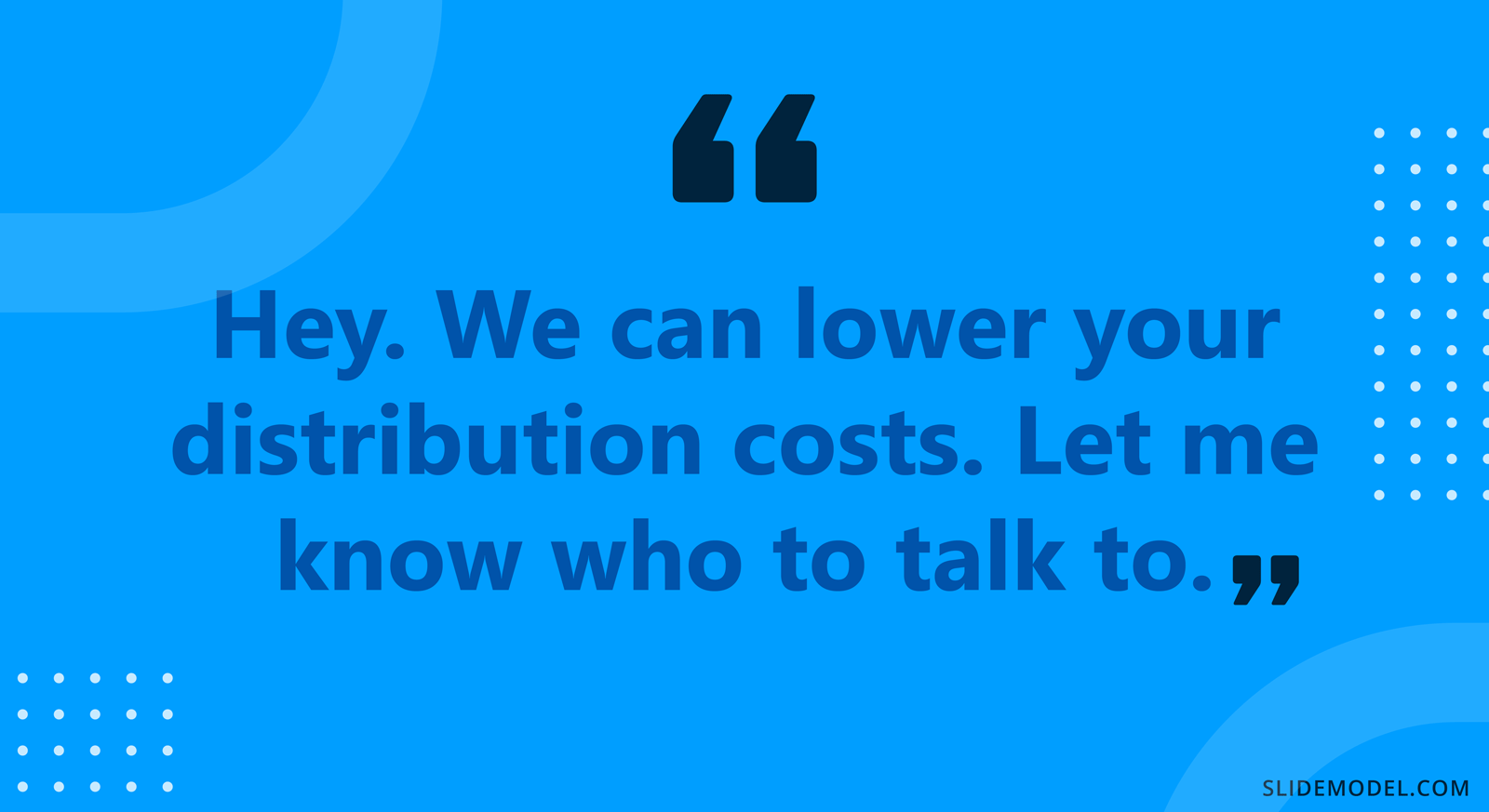
Follow-Up Sales Pitch
A follow-up sales pitch is a friendly reminder to follow up with the prospect about the initial call or a product demo.
Commonly a sales follow-up is made via landline phone service or email. According to the studies, salespersons have to do at least four follow-ups to close the deal, and most of the salespeople give up just following up once, which leads to a dead end. As a result, potential revenue is left on the table.
Warm Sales Pitch
A warm sales pitch is made when the salesperson has had prior contact with the prospect before, who has shown some sort of interest in the offer.
79% of companies achieved their revenue goals using a personalization strategy. Sales executives should look for different sales pitch ideas to understand the importance of personalization. It’s great to use pitch deck templates if the sales pitch is for a startup or a new business.
Here’s a warm sales pitch by the biopharmaceutical company Merck which aspires to be the premier research-intensive company globally.

Cross-selling, and Upsell Sales Pitch
A Cross sales pitch allows a sales representative to encourage the prospect to buy a secondary product to the primary one.
For example, if a salesperson is selling a marketing tool to digital marketing agencies, a cross-sell would be selling a whole CRM. On the other hand, an upselling sales pitch includes selling a premium membership to a customer already using the basic version of a product/service that the client is using.
The Subject Line Sales Pitch
A subject line sales pitch is often included in a weekly newsletter or email series to launch a new product. The goal is to help prospects book an appointment rather than make a sale.
Here are some great subject line sales pitch examples and good sales pitch examples to inspire your own pitches.
- X tips/ideas for [pain point]
- The idea for [topic the prospect cares about]
- 10x [prospect’s company]’s traction in 10 minutes
- Feeling [insert emotion]? Let me help
Ideas: What to Include in a Sales Pitch Presentation?
When you think about how to present a sales pitch & sales plan, it’s crucial to understand that your presentation should not only inform but also engage and persuade your audience. The key to a successful sales pitch lies in creating a narrative that connects with the prospect on an emotional level while also providing concrete data and solutions. Here are some ideas on what to include in an effective sales pitch.
Showcase partnerships to enhance the value proposition
This is something obvious and an absolute no-brainer. If a business has social proof that’s backed by partnerships, then it’s a win-win situation.
It’s easier for sales executives to sell a product/service with great brand awareness. Statistics show that 71% of the customers are more likely to buy from those brands that they know, which makes the selling process easier for the salespersons.
Sales executives should showcase the partnerships in the presentation to enhance the value proposition with a visual slide. Below is a great example by Salesforce. It showcases almost all the big brands like Apple, Google, AWS, IBM, etc., whom they have helped with bringing great results. As a result, it improves the value proposition and, thus sales!
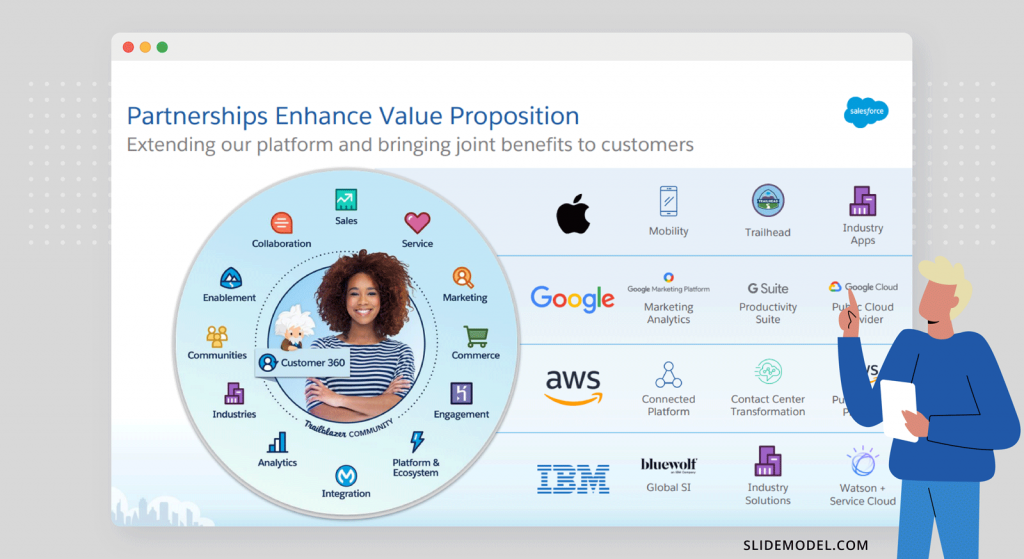
Apart from that, it is also great to showcase consulting partners, just like this.
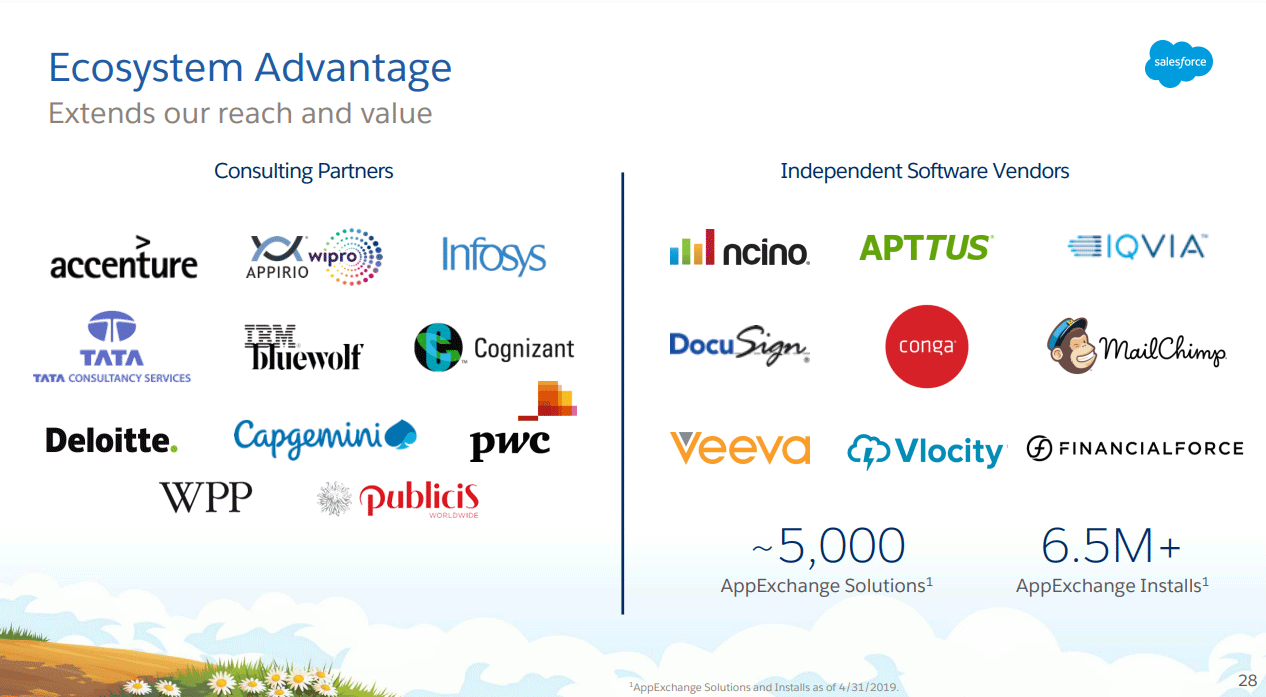
Identify the Biggest Pain Point and Agitate It
The target audience might not know the biggest pain point, it’s a sales rep’s responsibility to identify and agitate it ask the questions, and then include that in the presentation.
Rev is a B2B company that helps big companies find leads/prospects with AI. Once sales reps understand the pain point, showcase the solutions because people will trust them more if you show more than telling.
Pain point: Hard to find good leads
Solution: Avoid the noise and choose the best leads using AI
Here’s a great example by GetReav.ai, formerly known as LeadCruch.

Go Beyond Profit/Loss
When presenting a sales pitch, new hires on the team often present a product/service in a rush to move to the next stage. Know that good business relationships take time and they go beyond profit/loss. Thus, salespersons must engage them emotionally while providing value. People love to be cared for and love to be heard.
Showcasing a social sense of responsibility will help engage the audience better and help them move to the next stage of the funnel easily. As a result, companies earn social value, confidence, and ownership.
Below is one of the great sales pitch presentations by Salesforce which showcases it’s social contribution through a core values slide.
- Best workplaces for giving back fortune magazine
- Best workplace for women
- Best places to work for LGBTQ equality
- The world’s most ethical companies honoree
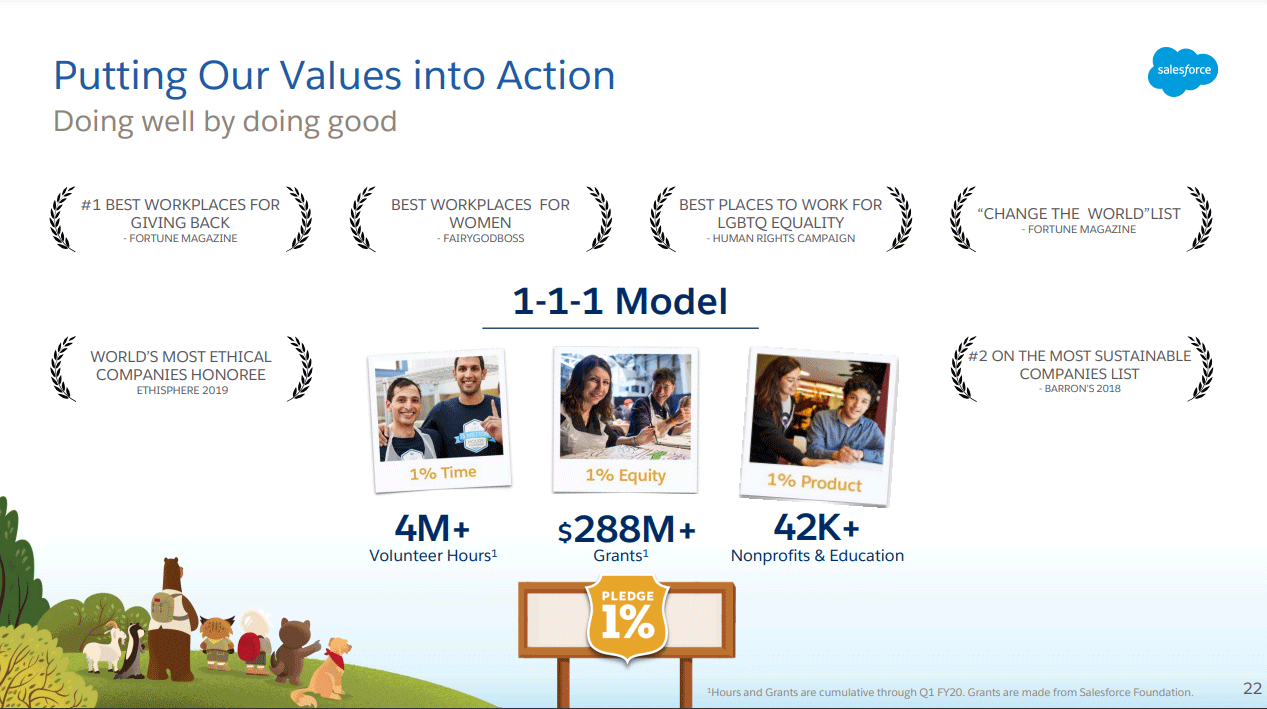
Present Data in a Sales Pitch Deck
Data never lies. A sales pitch that’s backed by data is more effective than just words alone. Data gives the sales funnel authority and relevance. It’s great to display a case study and the results achieved with another client.
Of course, data can be a great weapon when acquiring new customers, but it can also help have a customer-centric sales experience and personalized approach.
Sales reps should identify a successful case study and show the statistics and data in the presentation, just like this presentation by Salesforce.

Show Before and After
It is the core responsibility of the sales representative to present before and after situations.
Use symbols, numbers, or other graphics to showcase how the product/service can impact the current business process of the client, or improve the business practice. A salesperson’s responsibility is to showcase how the evolving product/service can help take their business to the next level using sales pitch templates.
Here’s an example of a sales pitch that shows the “After” state of the product of Zuora that helps its clients find new business opportunities and automates complex revenue streams through subscriptions, consumption, or a variety of pricing strategies.

A Clear Call-to-Action
The last thing salespersons need to focus on when ending a sales pitch is to entice the customer to take action.
A great sales pitch should enable the prospect to take action that might include trying a free version, taking a demo class, or signing up for free. Go beyond the traditional call-to-action phrases like call us today, sign up now, etc.
For example, add phrases like, Speak to Sales Agent Now rather than Call Us Today. That’s what we call the Obtaining commitment stage of the sales pitch that we discussed early in this article.

Recommended reading: How to end a presentation – You can get some insightful recommendations on how to end a presentation, including a sales pitch presentation.
Advantages of Perfect Sales Pitch
Before we could end our article, here’s how a sales pitch will help businesses from a general perspective.
- Improves brand awareness
- Helps to stand ahead of the competition
- Boosts sales
- Ensures customer engagement and retention
Why A Short Sales Pitch is A Good Pitch
- Leaves Room for Curiosity: Short pitches create a sense of curiosity in the prospect. By not revealing every detail upfront, you pique their interest and encourage them to ask questions, leading to a more interactive and engaging conversation.
- Encourages Two-Way Communication: A brief pitch opens the door for a two-way conversation. Instead of bombarding the prospect with information, you invite them to participate actively in the discussion. This engagement can lead to a deeper understanding of their needs and objections.
- Allows Adaptation: Short pitches are versatile and adaptable. Depending on the prospect’s responses and feedback, you can tailor your pitch on the fly. This agility enables you to address specific concerns and objections effectively.
- Creates a Memorable Impact: A concise and well-structured pitch is more likely to leave a lasting impression on the prospect’s mind. When your message is clear and succinct, it’s easier for the prospect to recall and share with others.
- Ideal for Networking Events: In settings like networking events, where time is limited, a short sales pitch is invaluable. It allows you to make a quick but impactful introduction, leaving the door open for follow-up discussions.
- Prevents Information Overload: Long-winded pitches can overwhelm the prospect with too much information, leading to decision fatigue. Short pitches provide just enough information to initiate interest without inundating the prospect with details.
- Encourages Qualification: A concise pitch can help you quickly determine if the prospect is a good fit for your product or service. If they express interest, you can delve deeper into the specifics. If not, you can move on to more promising leads without wasting time.
Final Words
A sales pitch can make or break the deal. But once a salesperson or sales rep can master the art of creating and delivering sales pitches, they will not stop the grind and will never look back. A successful sales pitch needs research, hard work, practice, test, and everything in between.
Learn how to create a sales pitch deck and present it well to scale business to the next level. Not a professional designer? Use pitch deck templates to design incredibly appealing sales presentations. All templates are 100% editable and compatible with PowerPoint and Google Slides. Remember, often best pitches are crisp, concise, well-designed, and clear and they always win the race.


